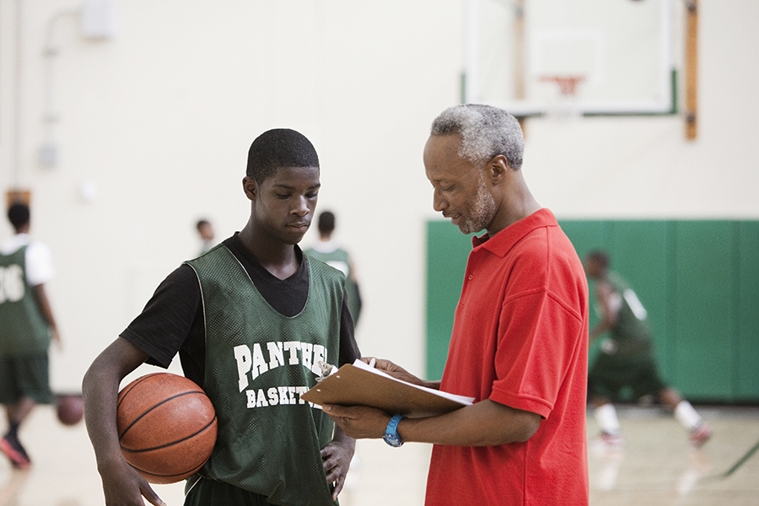Sudden Cardiac Arrest: Are Student-Athletes at Risk?
Oct 19, 2023

As we’ve seen from Hank Gathers and Bronny James, this heart event is potentially deadly. Here’s what to know.
Athletes are often the picture of peak health. After all, they exercise regularly and eat properly to fuel their bodies for their sport. Recent high-profile cases of players’ hearts stopping during exercise or competition have drawn concern, however, especially among parents of student-athletes.
In early 2023, millions of football fans watched as24-year-old Buffalo Bills safety Damar Hamlin had his heart stopon the field after a tackle. That summer,LeBron James’ son Bronny, just 18 years old, suffered cardiac arrestduring a basketball practice at the University of Southern California. While both of these young athletes survived thanks to quick action, not all are so lucky. A study in theAmerican Heart Association journalCirculationestimates that one young athlete dies of sudden cardiac arrest every three days in the United States.
What Is Sudden Cardiac Arrest in Athletes?
Cardiac arrest is sometimes referred to as a heart attack, but these are different heart-related events. A heart attack happens when an artery in the heart is blocked by plaque buildup or a blood clot, cutting off or severely reducing blood flow to the heart. Cardiac arrest, meanwhile, happens when the heart suddenly stops beating, often because of overexertion or blunt trauma to the chest.
Read More: Signs and Symptoms of a Heart Attack
Underlying conditions are often at the root of sudden cardiac arrest. In young people, two common causes are:
- Abnormal heart rhythm (heart arrhythmia): When the heart beats too quickly, too slowly or irregularly, it may not be able to pump enough blood to the body.
- Hypertrophic cardiomyopathy: Also known as an enlarged heart, this genetic defect occurs when the heart muscle thickens, reducing its ability to pump blood efficiently.
Some athletes have a greater risk of dying from cardiac arrest, depending on several factors. Death rates are higher in male athletes, Black athletes and basketball players — in fact, Division I college basketball players are 10 times more likely to experience sudden cardiac death than the overall athlete population, with 1 death in every 5,200 athletes. Experts are not sure why this is.
What’s Changed for Cardiac Arrest in Athletes?
More than 30 years ago, sudden cardiac arrest hit the headlines when 23-year-old basketball player Hank Gathers, a senior at Loyola Marymount University with a promising career ahead of him, collapsed during a postseason game and died soon after.
While Gathers’ death was tragic, it brought an important conversation to the table: How do we better care for young athletes? Gathers had experienced a fainting spell earlier in the season. He was diagnosed with an abnormal heartbeat but played on. It’s possible that intervention in the form of proper medication, a medical procedure or abstaining from basketball could have saved his life.
TheSudden Cardiac Arrest Foundationformed in the years since to spread awareness of the incidence of sudden cardiac arrest in young people. The foundation educates the public — particularly schools, parents and youth sports leagues — on the importance of preventative screening and the lifesaving value of fast treatment.
How Is Cardiac Arrest Treated?
When an athlete experiences cardiac arrest, a quick response is a key factor in preventing death. When an automated external defibrillator, or AED, is used within three minutes to shock the heart back into rhythm, 85 percent of people survive. But survivability drops by up to 10 percent for every subsequent minute that passes. It’s vital for school gymnasiums and athletic trainers to be equipped with AEDs in case of emergency. If a defibrillator is not readily available, give CPR until emergency help arrives.
Read More: Why You Need to Understand AEDs and CPR
How to Prevent Sudden Cardiac Arrest in Athletes
Because sudden cardiac arrest is often the result of an underlying heart issue, such as an abnormal heart rhythm or congenital (present at birth) heart defect, it’s important for young athletes to have regular physical exams.A pediatrician or family physiciancan do several exams to check for heart issues, including listening to the athlete’s heart with a stethoscope and reading its electrical signals with an electrocardiogram. Parents should be present at the appointment to help their child discuss any family history of heart issues.
Another important step in preventing sudden cardiac arrest in student-athletes is understanding the signs to look for. Like Gathers, about a third of athletes who die from sudden cardiac arrest had reported symptoms leading up to the event, including:
- Chest pain
- Shortness of breath
- Decline in athletic performance
- Dizziness, lightheadedness, nausea or fainting
Athletes who experience these symptoms should be evaluated by a sports medicine physician or cardiologist before they return to play.


